Conservation and Restoration of Period Furniture
Conservation, as practiced by institutions such as national museums and many other well known collections open to the public, may be considered to be action taken to preserve an artifact in a condition which will represent, as truly as possible, not only the work of its original maker, but also the history of its fortunes and misfortunes in the hands of successive owners, repairers and improvers. Such action will invariably include measures to eliminate the obvious results of neglect and to arrest further deterioration, but it may often be considered incorrect to remove or replace non-original parts, even in cases where these are judged to be inappropriate or of inferior workmanship. The treatment of surface finishes would, in most cases, be minimal apart from dealing with film finishes. Where conservation is judged to be compatible with the continued functioning of a piece of furniture, it may sometimes be considered legitimate to carry out such repairs, replacements and adjustments as are necessary to make for an efficient working of the object.
The term restoration tends to be interpreted much more widely, according to the different circumstances of individual craftsmen and collectors, and the very nature, age and provenance of the artifact in question. Furniture restorers cannot be regarded as being entirely distinct from conservators because, not only are there many present day owners and restorers who adopt a marked conservationist approach to the restoration of wooden artifacts, it is also not uncommon for conservators to be sympathetic to and become involved in certain aspects of restoration. Thus, there are many collectors and restorers who would only rarely permit a restoration to go as far as, and never beyond, the bringing of an artifact to a condition corresponding to that which would be expected in one of similar age and provenance, but in a high state of preservation. On the other hand, most museum conservators are happy to restore artifacts that would thereby be better protected and appreciated.
It is where commercial imperatives apply in restoring furniture and wooden artifacts for profit through the increasing numbers of prestigious showrooms and auction houses, that the more extreme objective is often to return an artifact to its state when new, or to an even higher standard than it possessed when it left its makers hands. So generally speaking, however, the restoration of wooden artifacts may be taken to imply the painstaking and sympathetic correction of all faults and wear, observing wherever possible the craft traditions employed in its original construction. It is the treatment given to the more immediately obvious cosmetic features of wood that the different extremes of interpretation of restoration are found.
A repair on a piece of furniture may be taken to refer to any specific process of mending, replacing or finishing any wear that may arise on case or seating work which may arise during routine maintenance or in the course of a program of restoration or conservation. However, the term repair is typically applied to work carried out on furniture and wooden artifacts of the 20th century.
In the video below, Gregg Perry, The Historic Preservationist, discusses the art of marquetry which was part of the restoration / conservation program he completed while attending the Ecole Boulle in Paris, France.
Specialized Services Offered
Marquetry

Includes replacement of any missing pieces of marquetry, marquetry panel stabilization, boulle work (included – tortoise, brass, silver), utilizing traditional techniques with plane sawn veneers from Europe; adhesives used are hide and fish glue.
Gilding
Certified French and Italian gilder, providing restoration and conservation on water and oil gilded surfaces.
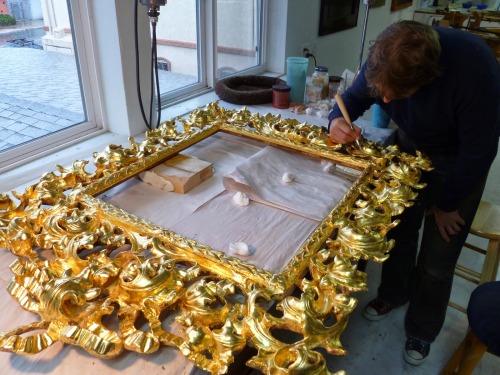
Film Finishing

Surface finish testing available to determine what finish or finishes are present; specializing in French polishing applications utilizing traditional European methods using a tampon.
Sculpting
Carved or sculpted custom wood components hand carved at the bench.

Leather
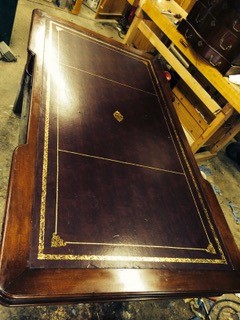
Leather surface restoration, conservation, stabilization and rehydration are available. Custom coloring and repairs including patching; hides available. Leather desktops resurfaced with custom gilt roulette decoration in 23 carat gold where applicable.
Upholstery
Upholstery services for period furniture only, utilizing traditional techniques; for example, hoghair, horsehair, cotton batting, muslin and spit-tacks.
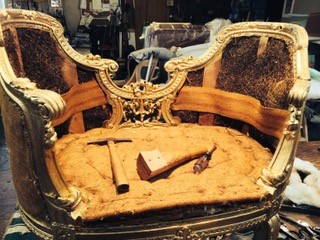
Chinoiserie / Urushi lacquer
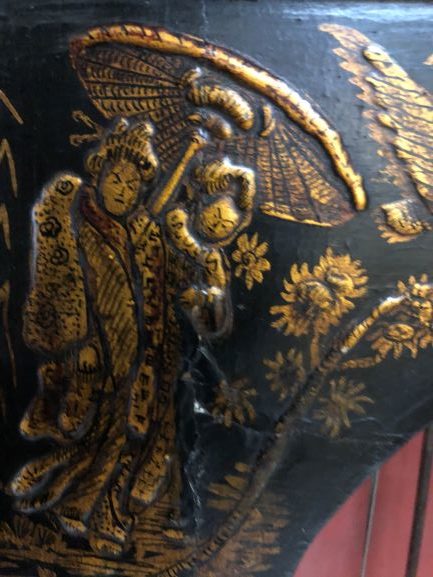
Repairs only for urushi lacquer and chinoiserie surfaces; available in scarlet, black, dark green and tortoise. Built up gesso figurines also fabricated.
Connoisseurship
Talks and dissertations delivered to historical groups on connoisseurship. This is identifying and separating something that is superior to its lookalikes and, at times, can be fun, intellectually stimulating and occasionally even financially rewarding.

Ancillary Services Offered
Collection Building
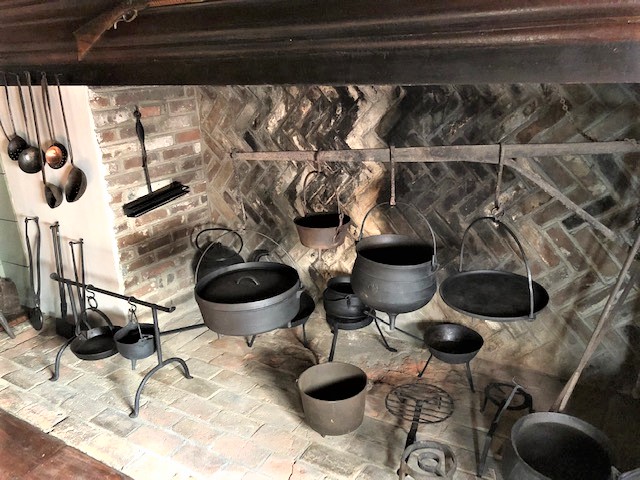
For museums who seek the advice of an expert or the home collector, collection building is available of all the decorative arts. We assist with picking and choosing and making available, seeking and retrieving various artifacts to fill out desired historical cultural artifacts.
Onsite

Onsite services for museums and large collections include: interventions, authentications and restoration and conservation work where the object(s) cannot be removed or the custodian does not wish it to be moved.
Authentication

Authentication services are available utilizing ancient documentation including diaries and historical libraries, tell-tale signs of letting the piece in question speak to you of its past, and microscopy analysis.